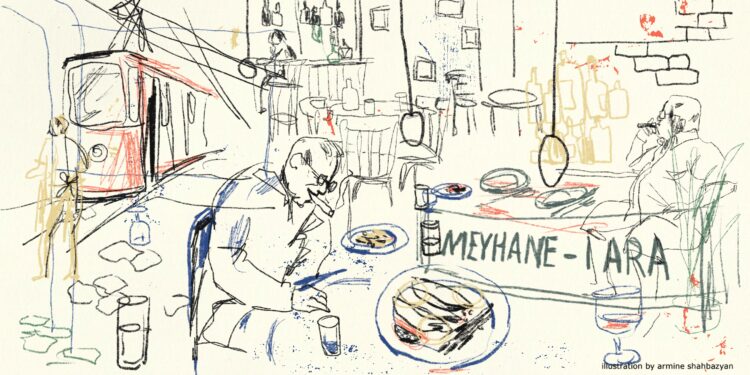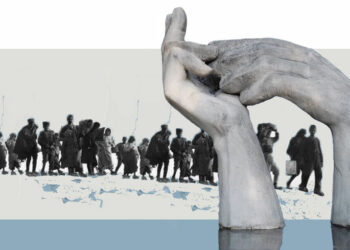Raw & Unfiltered
Bourj Hammoud and the Prodigal Daughter
A native of Bourj Hammoud bids farewell to her hometown following an attack on writer Raffi Doudaklian in what appears to have been an attempt to silence his words. In this deeply personal essay, Roubina Margossian reflects on her complicated relationship with the town.
2008: Post-Election Armenia in Images
On March 1, 2008, police units move in to put an end to ongoing protests disputing the results of the February 19, Presidential Elections in Armenia. In the aftermath ten people are dead, hundreds were injured. The reality before and after March 1st as seen through the lenses of the members of the 4Plus photo collective.
There is Now a Statue of a Dove in Sumgait
Deciding never to use the word Genocide and then coming face-to-face with it again in a new context; between reading biographies of the victims of the Sumgait Pogrom over and over again and the urge to see who now occupies the homes of the Armenians of Baku and Sumgait, writer Lusine Hovhannesyan unexpectedly discovers a common yet obvious thread.
My “Karabakh Movement”
Journalist Lusine Hovhannesyan recounts her personal memories as a university student during the first days of the Karabakh Movement. She writes, “We became beautiful and fell in love easily like young men and women living out their last days at the barricades and we sang songs of resilience in the streets of Yerevan.”
What is “Armenian” in Armenian Identity?
In the last 100 years, there have been hierarchies of identity and canonical approaches to definitions of "Armenian," especially as articulated, rationalized and promoted by elites, institutions and political parties in the Diaspora and in Armenia. This essay is not a study of identity per se, but about one of the aspects of identity – the “Armenian” bit of it.
1988
In this exceptionally honest and candid article, Gevorg Ter-Gabrielyan writes about his impressions from the first few months of the Karabakh Movement 30 years ago, with words he did not have nor could find at the time.
Rethinking the Discourse on Armenian Diaspora: Language(s), Culture(s), Affiliation(s)
In this first essay for EVN Report, Dr. Vahe Sahakyan of the University of Michigan seeks to address the issue of Armenian diaspora leadership by examining it in theoretical and comparative perspective. He asks, who are the diaspora leaders, and can they have multiple geographical or cultural identities and yet remain ethnically “unmixed?”
Addressing the HPV Vaccine Hysteria
Over the course of the next two years, 20,000 13-year-old girls in Armenia are to receive the HPV vaccine free of charge before the Ministry of Health makes a decision for permanent implementation of the vaccine into the national plan.
On the Edge of Life and Death: 18 Hours Under the Ruins
When a massive earthquake rocked northern Armenia in 1988, EVN Report’s Vahram Ter-Matevosyan was a fifth grade student in Gyumri. In this personal essay, he recounts his experience of being trapped beneath the ruins of his school for 18 harrowing hours.
Heart First
In this poignant essay, Lalai Manjikian writes about the frantic rhythm of managing a career and motherhood. The transition to motherhood, she writes, is not necessarily easy and nor is it the aestheticized perfect pastel images on social media. It is messy, painful, and exhausting, yet, interspersed with pockets of unimaginable heart-expanding joy.












